Colors
Boxer Colors
-min-550x271-1920w.jpg)
Roxy (white Boxer) and Tatum Mae (fawn), photo courtesy of Marrissa Thomas
-min-320x158-1920w.jpg)
The Boxer is a very interesting breed in regard to color. Some breeds can have over 15 color combinations. The Boxer has Only 3 Possible Main Colors:
- Fawn
- Brindle
- White - Sometimes with colored patches, also know as a "Check" Boxer. White is recognized, yet not standard.
With 5 Possible Markings:
- Black mask
- Black mask, white markings
- White markings
- Brindle
- Fawn markings
The first 3 markings are standard, brindle and fawn markings are recognized, but not standard.
The majority of Boxer dogs will be fawn or brindle with endless options of marking placement. We will discuss the meaning of Fawn and Brindle as it can be quite a range of colors on this dog breed. Not sure what color your Boxer is? Let's dive in a bit further and find out!
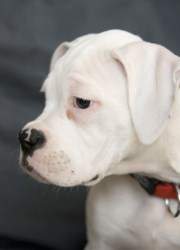
A full white Boxer is not as rare as some think. About 1 in 4 Boxers are white or mostly white.
Although not recognized as breed standard to some dog clubs; a white Boxer is truly beautiful. However, sadly is prone to deafness.
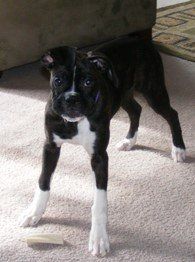
Rue La La (aka) Rucy,
at 4 years old
Photo courtesy of Jimmie
There are some Boxers that appear to be black. However, a solid black coat is not indicative of the breed.
So, how can this be? Read more about what markings and patterns can cause a black-like coat.
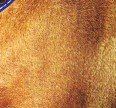
Fawn-
What exactly is the color fawn in regard to dogs? This sample is a typical fawn. However, as you will see, fawn is a range of hues.
To the right (below on mobile) is a medium fawn is the standard hue when referring to this terminology. With nice white flash markings on the chest and with black on the muzzle, this Boxer meets color breed standard very well.


Brindle - What is brindle? Brindle is not technically a color, it is a pattern.
The base is fawn and there is striping. The stripes may be light or dark, and density of the striping can range from thin to thick.
Some brindles will look almost fawn and some will appear so dark that they look black.
This Boxer shows the standard brindle striping. With white on his chest, paws and ankles and black on the muzzle, this Boxer also meets breed standards perfectly.


This is a red fawn Boxer.
As you can see, this fawn is darker and deeper than that the common tan fawn; producing a slight shading of red. What a gorgeous coat.
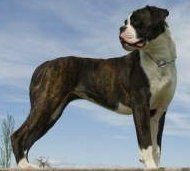
This Boxer is a dark brindle. As you can see, with dark brindle the black is over powering the fawn color.
The black striping in this pattern is heavy; which would be called a reverse or even a seal.

If a Boxer has more than 1/3 of white on his body, the dog will be classified as Parti-color.
Which simply means that the dog is not officially a solid fawn; he is a mix of colors.

A white Boxer with a patch of another color, such as this Boxer with a fawn patch on the eye may be classified as a "Check" Boxer, however there are no official set guidelines and most Checks have at least 30-40% color.
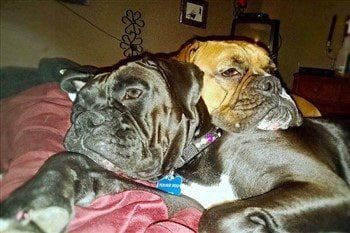
Seal - The Boxer dog you see here on the left is Vesta; this color is often referred to as seal. This is a super tight brindle. Siennna, right, is a fawn. Photo courtesy of Nancy
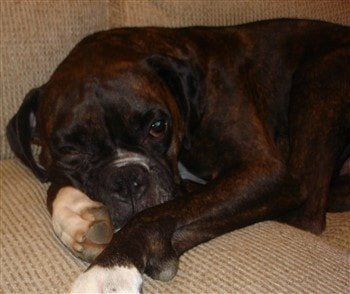
Dark Brindle Boxer. Turkish, at 7 years old, photo courtesy of Renata
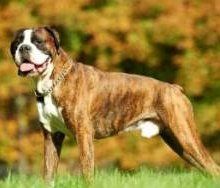
Boxer Dog Flash
The white markings on this breed are called "flash". If a Boxer has a moderate amount, one often refers to this as semi-flashy.
Those with prominent white on a good portion of the coat are called flashy. There is no exact of percentage that qualifies a Boxer as either having flash or being flashy, however a 30/70 fawn (or other color) to white would be a safe ratio.
In show, not more than 33% (1/3) of white "flash" markings should cover the dog's coat.
No Markings?
Not all Boxers have white markings. These are known as plain Boxers, but the term is misleading, as it refers to the genes at work. Read more: Boxers without White Markings
Brindle Explanation
Brindle (one of the colors of this breed) is actually a pattern. Stripes running through the coat (partial or full) is brindling. These are often black hairs, but may be any color that is a darker shade than the hairs that run under it.
Depending on the exact color of these brindling pattern stripes, one may refer to a Boxer using one of the following terms (listed in order from a very light brindle to a heavy dark striping):
- Light (super light)
- Golden
- Fawn
- Red
- Mahogany
- Dark
- Reverse
- Seal (very heavy)
No matter which term above is used to describe the dog, he/she is technically a brindle (registered and shown as such)
Rare and Unusual Boxer Dog Coloring
Since the Boxer breed can only be found in a handful of colors (unlike some other breeds that can be found in a wide range), there is almost never a question about what color a Boxer puppy or dog is. However, every now and then a unusual color will appear. Such is the case with a golden colored Boxer.
-501x339.dm.edit_LQPipW-1920w.jpg)
Nilla
Photo courtesy of Lisa Taylor
Have a look at Nilla (16 weeks old). Her father was a fawn and her mother was predominantly white. All of the other pups in the litter were fawn. She is getting darker as she ages, yet is still a wonderful light golden color.
Normally, if gold is to appear it will be within a brindle coat. If there was golden brindle in the sire's bloodline, it would explain how this Boxer came to have this remarkable light golden coat.
If you saw this color on a Beagle, it would be referred to as lemon. And with the white that appears, the dog would be a lemon & white.
While fawn itself can range from light to very dark, most often a light fawn Boxer is of a color darker than this gold that you see.
Since there is not a 'gold' option for coloring on registration forms, this Boxer would be dubbed a fawn.
The Facts and Fiction of White Boxers
Though white used to be an accepted color, it was taken off the standard colors though is still recognized by the AKC. In other words, a Boxer can be registered as a white.
The main issue is a high occurrence of deafness that is seen with mostly or fully white Boxer dogs.
There is a lot of misconception that white Boxers have additional health issues; they do not; most
white Boxers are just as healthy as fawn or brindle Boxers. In regard to those that have white coats, about 18% are born deaf. And despite myths, they have the same
behavior and
temperament as any other.
Quick Q&A: Are white dogs albino dogs? No. There are very few true albino dogs in the world. If so, they will have no color at all on their body. White coated dogs will have a black nose and muzzle and may have a patch of another color.
Are white Boxers rare? Over 20 percent of Boxers are born white. This happens when both sire and dam carry a white gene in their DNA.
However, because of the stubbornness of a few dog clubs (the American Kennel Club is one of them) excluding white Boxers from the breed's standard coloring, some backyard breeders will not allow white Boxers to live.
This Medieval practice has animal rights activists up in arms and most Boxer lovers hope that one day white Boxers will be accepted back into the breed standard. They are not that rare and the vast majority of owners and breed enthusiasts believe that they should be considered a natural color.
AllBoxerInfo.com All content is protected by US and International copyright laws. All rights reserved.
We are a participant in the Amazon Services LLC
Associates Program, an affiliate advertising program designed to provide a means for us to earn fees by linking to Amazon.com and affiliated sites.
